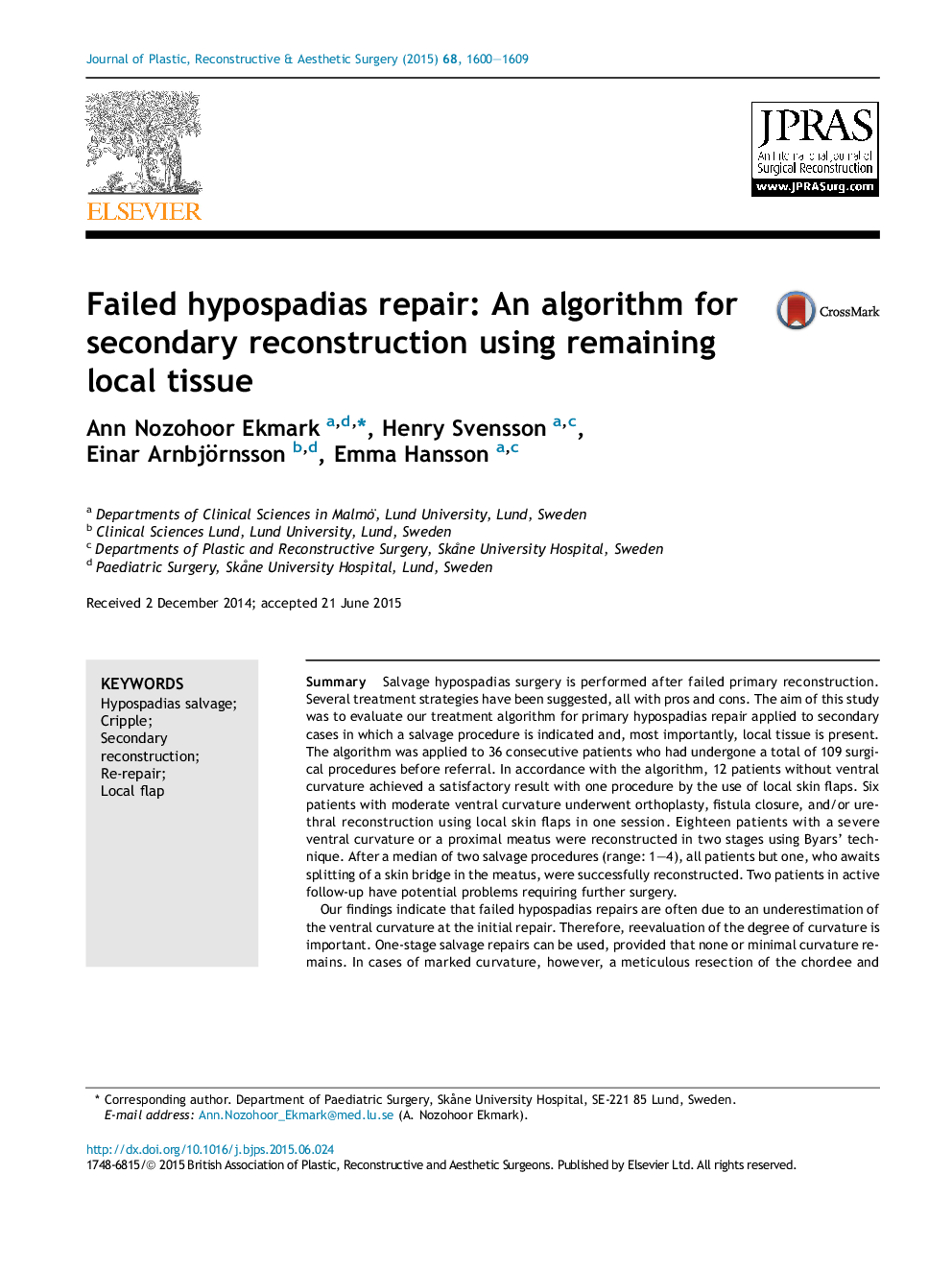| Article ID | Journal | Published Year | Pages | File Type |
|---|---|---|---|---|
| 4117062 | Journal of Plastic, Reconstructive & Aesthetic Surgery | 2015 | 10 Pages |
SummarySalvage hypospadias surgery is performed after failed primary reconstruction. Several treatment strategies have been suggested, all with pros and cons. The aim of this study was to evaluate our treatment algorithm for primary hypospadias repair applied to secondary cases in which a salvage procedure is indicated and, most importantly, local tissue is present. The algorithm was applied to 36 consecutive patients who had undergone a total of 109 surgical procedures before referral. In accordance with the algorithm, 12 patients without ventral curvature achieved a satisfactory result with one procedure by the use of local skin flaps. Six patients with moderate ventral curvature underwent orthoplasty, fistula closure, and/or urethral reconstruction using local skin flaps in one session. Eighteen patients with a severe ventral curvature or a proximal meatus were reconstructed in two stages using Byars' technique. After a median of two salvage procedures (range: 1–4), all patients but one, who awaits splitting of a skin bridge in the meatus, were successfully reconstructed. Two patients in active follow-up have potential problems requiring further surgery.Our findings indicate that failed hypospadias repairs are often due to an underestimation of the ventral curvature at the initial repair. Therefore, reevaluation of the degree of curvature is important. One-stage salvage repairs can be used, provided that none or minimal curvature remains. In cases of marked curvature, however, a meticulous resection of the chordee and ventral scarring is crucial. The subsequent repair of the large ventral defect and the long urethral reconstruction can, in most cases, be safely managed in a two-stage procedure.
